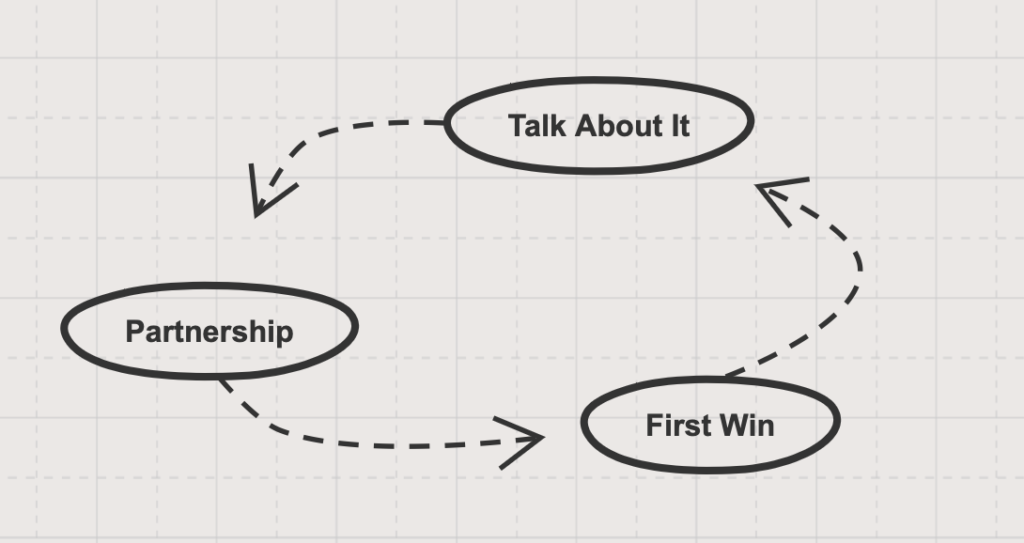One of the challenges founders face is that product businesses in the WordPress ecosystem are undervalued, due in large part to the nature of WordPress as a decentralized ecosystem1 – it’s hard to get traction.
For those trying to grow, whether bootstrapped, raising money, or positioning for an acquisition, a lack of traction in the WordPress ecosystem is especially challenging.
In this piece, we’ll walk through the three problems I’ve identified, introduce a growth strategy, talk through the foundation needed to execute the strategy, then offer specific guidance for founders putting the strategy to work. Let’s do it.
The Three Problems
For a product company looking to grow in the WordPress ecosystem, there are three key problems that need to be solved:
- Monetization – The business model and pricing need to be aligned with value for both the customer and the company. Often, I see products simply mimicking the prices of others or trying to build on an unsustainable business model (e.g. lifetime pricing, racing to the bottom).
- Distribution – Potential customers need to know that the product even exists. After 17 years in WordPress, I still regularly come across products I’ve never heard of. Adding your product to WordPress.org is no guarantee it’ll be found. Most product businesses have a marketing problem, which tangibly impacts their distribution.
- Compatibility – The product needs to work well with WordPress as an Operating System2 and with relevant plugins and themes. For newcomers especially, it’s common to see user interfaces that don’t feel “native” and products that don’t work well with the most popular plugins and themes.
A Problem-Solving Growth Strategy
I believe that growing a successful product business in the WordPress ecosystem is not only possible but probable, even inevitable – the key is choosing the right strategy.
My hypothesis is that with a solid foundation in place, a product company can grow in the WordPress ecosystem by utilizing what we’ll call the Partnership > First Win > Talk About It > loop. Catchy!
Let’s break it down.
A Solid Foundation
A great strategy without effective execution won’t win. Where I see most companies struggle is trying to execute on growth in the WordPress ecosystem without a solid foundation.
As I see it, there are five key aspects of a solid foundation for a product business in the WordPress ecosystem. Let’s take a look at each:
- Customer Centricity – Start with an audience with a clearly defined problem to solve3. Stay focused on solving that problem and engaging with your customers, gathering their feedback, and continuously validating that you’re staying customer centered.
- Compatibility – Solve the problem by maintaining compatibility with WordPress and with the relevant plugins and themes your customers care about. The plugin handbook is a good place to start.
- Business Model – Make sure that your business model, pricing, and go-to-market plan are aligned with value for the customer you’re serving and the problem you’re solving for them.
- For some specific guidance on the topic, see Monetizing an Ecosystem Plugin.
- Leadership – Make sure your leadership has the support and resources they need to navigate the challenges of growing in a decentralized ecosystem, whether or not they have experience. Gather a diverse team of advisors.
- Resources like the Product Strategy Stack and Traction can be great tools to bring leadership together.
- Community – Be active and engaged within the WordPress community, online and offline. Show up and keep showing up.
- New to offline events in WordPress? Start with my newcomers guide to WordCamps.
While there’s always more to a solid foundation and it’s essential to keep practicing kaizen (continuous improvement), in my work with product companies those are the five factors I’ve found to be positive indicators of success.
With that foundation in place, we can move on to the loop.
The Product Growth Loop
For a product company with a solid foundation, I recommend that they employ the following strategy that we’ll call the Partnership > First Win > Talk About It loop.

Let’s look at each step in the loop.
Partnerships
Our ecosystem is warming up to the idea of growing through strategic partnerships. I spoke about it at WordCamp Europe and published a framework for strategic partnerships that’s served as a starting point for founders.
Within the context of our growth strategy, the idea is that you start with a partnership. Identify another business within the WordPress ecosystem aligned with the audience you’re serving and the problem you’re focused on solving and form a partnership.
Early on, you can’t know whether a partnership will work out or to what extent. Accordingly, it’s critical to focus on your..
First Win
Work with your new partner to identify a first win. Given our emphasis on customer centricity, the ideal first win is going to be helping a mutual customer succeed.
This is where I often see partnerships go wrong. They “partner up”, and wait around for wins to happen. Stay focused on the partnership until you have a win that has all involved succeeding.
A first win is also a great way to gauge the quality of the partnership and decide how much further each of you are willing to invest.
Talk About It
Take the win and keep the customer in focus; it’s about them, not you. With the customer’s blessing, tell the story. Work with your partner to share the mutual win within your spheres of influence.
Talking about the win and keeping the customer in focus gives you an opportunity to both anchor and continuously refine your positioning.
Refine and Repeat
Keep working with your partners and add more partners into the mix, following the same loop with each partner and leveraging the success you’ve experienced (and talked about) into the next partnership.
It’s a simple loop and one that I often see break down at one or more steps in the cycle. Some product companies do a great job of getting partners excited about working with them, and then fail to get first wins. Others get the wins and fail to talk about them! Some folks get the wins and talk about them, but then miss the opportunity to start the loop over again.
In a decentralized ecosystem, repeating the loop is the key. Do it once. Then do it ten times. Then a hundred. Win by win, you’ll build momentum and that momentum is the key to getting the traction you’re after.
Guidance for Founders
If you have a product that’s ready for growth in the WordPress ecosystem, start with a partnership, create a first win, talk about it, and repeat.
Here are some specific pieces of guidance to consider:
- Create a “Top 20” partners list – Starting with the audience you’re serving and the problem you’re trying to solve, identify at least 20 potential partners and focus on them.
- Stay focused on mutual wins – Where I see product founders go wrong is getting excited about partnerships and then getting overzealous in their discussions with potential partners. Take your time to understand what matters to a potential partner and stay focused on creating that first win for all involved.
- Take a concierge approach – Commit more resources than usual to get the first win. Give the product away if needed for a period of time and/or offer implementation services to ensure success. Do what it takes to give all involved the best shot at success.
Want help? Reach out and let me know. I work with product companies directly as a consultant and advisor and we’re working towards a cohort of founders working together in the new year.
Special thanks to Amanda Macumber, Anna Maria Radu, Adam Weeks, Bob Dunn, Joshua Wold, Kevin Ohashi, Marc Benzakein, Nate Stewart, Rae Morey, Spencer Forman, and Tammie Lister for their feedback.
Footnotes
1. For more on WordPress’ decentralized nature, take a look at the benefits and tradeoffs of decentralization.
2. WordPress as an Operating System is one of my favorite topics.
3. If you’re interested in digging further into marketing as a topic, I produced a series during my time at WooCommerce called From Idea to First Customer (and a corresponding YouTube playlist) that you might find useful.
